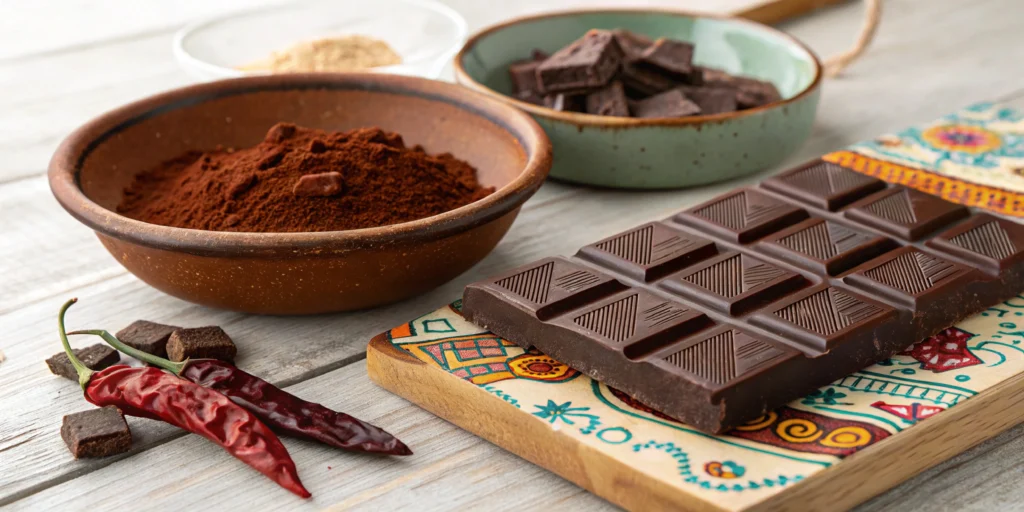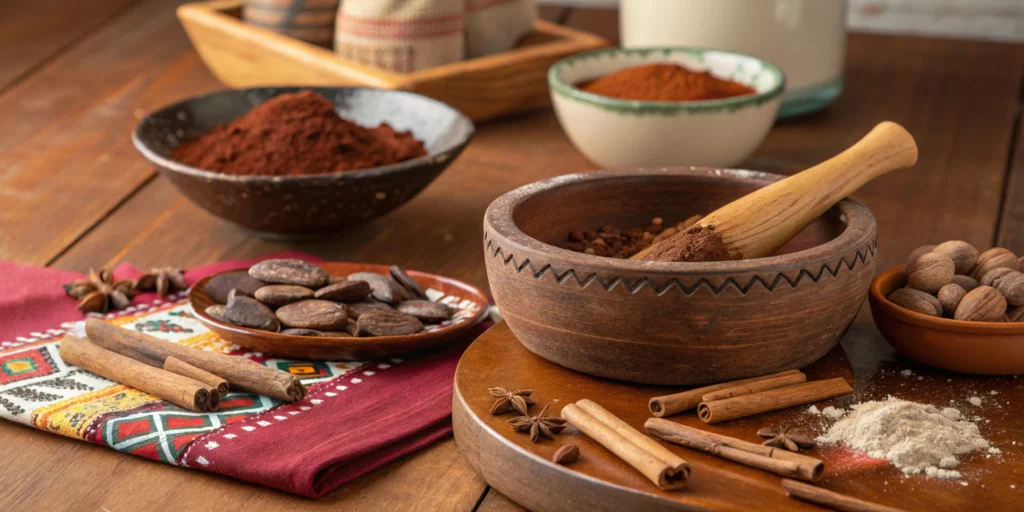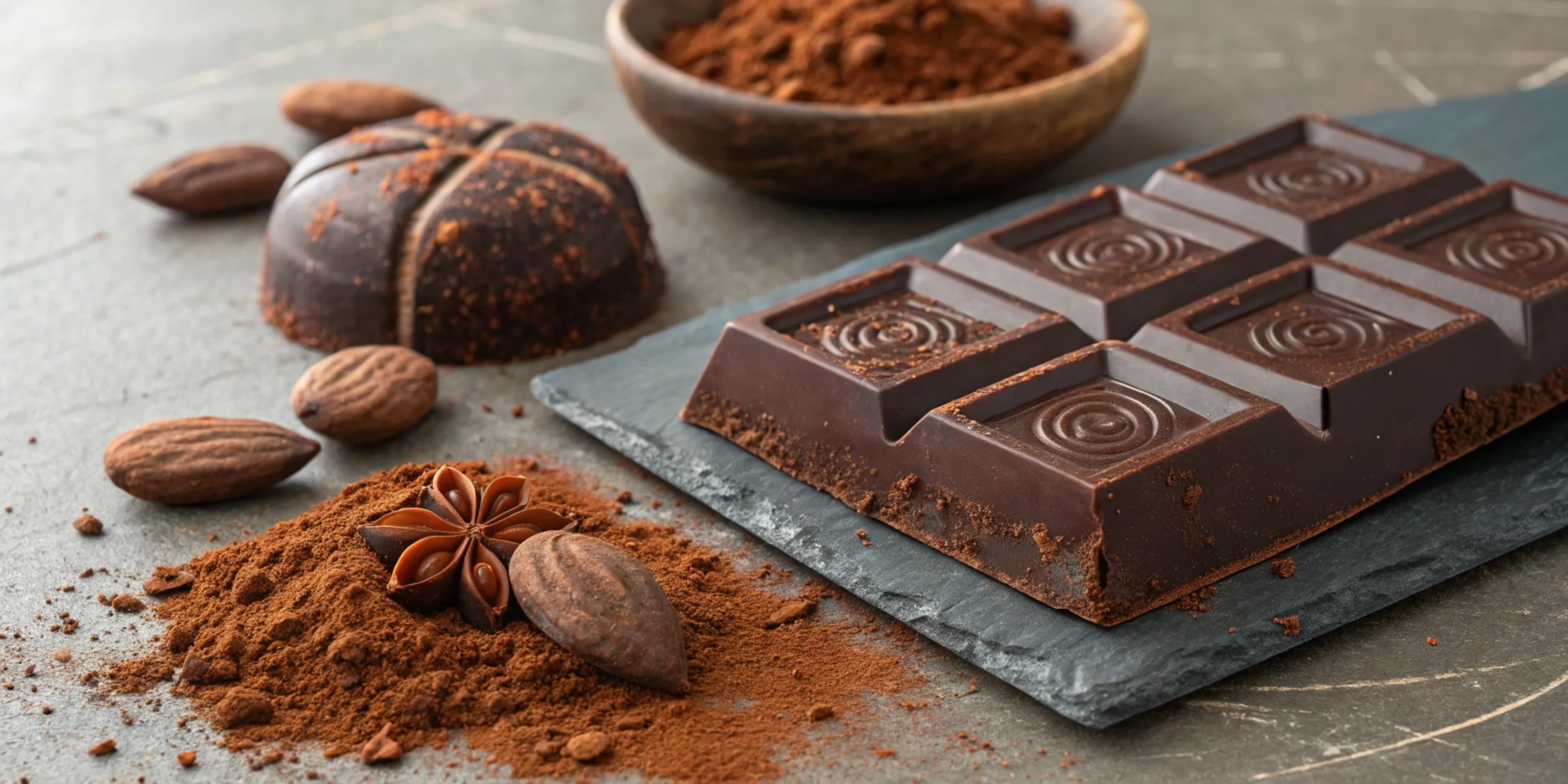Have You Ever Wondered: What Makes Mexican Chocolate Different?
You might think all chocolate is the same — sweet, rich, and satisfying. But if you’ve ever tasted Mexican chocolate , especially one made using traditional methods, you’ll know it’s like nothing else.
So, what makes Mexican chocolate different? Is it the texture? The flavor? Or something deeper — like history, culture, and tradition?
In this article, we’re diving into the world of Mexican chocolate to uncover what sets it apart from the average candy bar or gourmet truffle. We’ll explore its ingredients, preparation, cultural roots, and even share a simple recipe so you can bring that authentic taste home!
Let’s unwrap the secrets behind one of the world’s most unique chocolates.
Table of Contents
What makes Mexican chocolate different?
Before we talk about how to make it or enjoy it, let’s answer the big question: why does Mexican chocolate stand out from other types of chocolate around the world?
Mexican chocolate is special because of:
- Its grainy texture (thanks to stone-ground cacao)
- The use of spices like cinnamon and vanilla
- A touch of sweetness balanced with bitterness
- Traditional preparation methods passed down for centuries
- Deep cultural ties to ancient civilizations like the Aztecs and Mayans
Unlike modern European-style chocolates that are smooth and creamy, Mexican chocolate often has a rustic, earthy feel. It’s usually sold in small discs or tablets and used to make hot drinks, sauces, or desserts.
Now that you know what makes it different, let’s explore how it’s made and how you can experience it yourself!
Overview: A Taste of Tradition
Time Required: 30 minutes
Difficulty Level: Easy
Best For: Hot drinks, baking, and adding a cultural twist to desserts
Mexican chocolate isn’t just a treat — it’s a piece of history. Used for thousands of years by indigenous cultures, it was once considered sacred and even used as currency. Today, it’s beloved for its bold flavor and versatility.
Whether you’re making hot chocolate (champurrado) , mole sauce, or cookies, Mexican chocolate adds a depth of flavor you won’t find anywhere else.
Essential Ingredients: What makes Mexican chocolate different?

To understand what makes Mexican chocolate different, we need to look at what goes into it.
Traditional Ingredients:
- Cacao Beans – The base of all chocolate, but in Mexico, they’re often roasted and stone-ground, giving a coarser texture.
- Cane Sugar – Natural and less processed than refined sugar, balancing the bitterness of cacao.
- Cinnamon – A signature spice in many Mexican chocolate recipes.
- Vanilla – Adds warmth and depth to the flavor profile.
- Almonds or Other Nuts (optional) – Sometimes added for extra texture and richness.
Common Brands:
- Ibarra
- Abuelita
- Chocolate de Mesa
These brands mimic the traditional style and are widely available in supermarkets or Latin grocery stores.
Alternatives & Differences:
If you can’t find Mexican chocolate, here are some substitutes — though none quite match the original:
| Substitute | How it compares |
|---|---|
| Dark chocolate + cinnamon | Closest match, but lacks the grainy texture |
| Unsweetened cocoa powder + sugar + cinnamon | Works in a pinch, but not the same flavor |
| Mole sauce | Has similar ingredients but more complex and savory |
Step-by-Step Instructions: What makes Mexican chocolate different?

Let’s walk through a simple way to enjoy Mexican chocolate the traditional way — in a warm, comforting drink called champurrado .
You’ll Need:
- 2 cups milk (whole milk gives the creamiest result)
- 1 cup water
- 1 Mexican chocolate tablet (like Abuelita or Ibarra), broken into pieces
- 1/4 tsp ground cinnamon
- Pinch of salt
- Optional: 1 tbsp masa harina (corn flour) for thickening
Steps:
- Combine Liquids: In a medium saucepan, mix milk and water over medium heat.
- Add Chocolate: Stir in the broken chocolate tablet until fully melted.
- Spice It Up: Add cinnamon and salt. If you want a thicker texture, stir in masa harina.
- Simmer Gently: Let the mixture simmer for 5–7 minutes, stirring constantly to avoid burning.
- Blend (Optional): For smoother texture, blend with an immersion blender or regular blender.
- Serve Warm: Pour into mugs and enjoy!
Tips:
- Use a wooden spoon to stir — it helps keep the chocolate from scorching.
- Don’t let the mixture boil — it can separate or burn.
- For extra authenticity, whisk with a molinillo (a wooden frothing stick).
Assembly: Building Your Perfect Cup
Creating a delicious Mexican chocolate drink isn’t just about mixing ingredients — presentation matters too!
Layering Flavors:
Start with the liquid base, then add the chocolate slowly while stirring. This ensures even melting and avoids clumps.
Presentation Ideas:
- Dust the top with a bit more cinnamon.
- Add a dollop of whipped cream or marshmallows for a cozy twist.
- Serve with pan dulce (Mexican sweet bread) on the side.
Storage and Make-Ahead Tips
Storing:
- Refrigerate: Leftover champurrado can be stored in an airtight container for up to 3 days.
- Freeze: Pour cooled chocolate into ice cube trays for easy single servings. Thaw and reheat when ready to use.
Reheating:
- Stovetop: Heat gently over low heat, stirring frequently.
- Microwave: Stir every 30 seconds to prevent separation.
Make Ahead:
Mix dry ingredients (cocoa, sugar, cinnamon) in advance and store them in a jar. Just add hot milk or water when you’re ready to enjoy.
Recipe Variations: Mix It Up
Want to try new twists on classic Mexican chocolate? Here are some fun ideas:
1. Spiced Chocolate Latte
Add a dash of chili powder or cayenne for a spicy kick — inspired by the traditional mexicano caliente .
2. Chocolate Oatmeal
Stir crumbled Mexican chocolate into hot oatmeal for a hearty breakfast with a twist.
3. Vegan Version
Use almond or oat milk and coconut sugar to make a dairy-free version.
4. Baking with Mexican Chocolate
Melt it into brownies, cookies, or cakes for a rich, spiced chocolate flavor.
5. Frozen Treats
Make popsicles or frozen yogurt by blending Mexican chocolate with bananas or coconut milk.
Conclusion: What makes Mexican chocolate different?
Mexican chocolate is more than just a snack — it’s a window into a rich culinary heritage. With its unique texture, bold flavors, and deep cultural roots, it’s no wonder people love it.
Whether you’re sipping it on a chilly morning or baking with it for a family dessert, Mexican chocolate brings warmth, comfort, and a little magic to every bite.
So go ahead — grab a tablet, heat up some milk, and see what makes Mexican chocolate different for yourself. Your taste buds will thank you!
FAQs:What makes Mexican chocolate different?
Got questions? We’ve got answers! Here’s everything you need to know about Mexican chocolate.
Why is Mexican chocolate different from regular chocolate?
Mexican chocolate is traditionally made with stone-ground cacao , cinnamon , and raw cane sugar , giving it a gritty texture and spiced flavor . Unlike European chocolate, which is smooth and creamy, Mexican chocolate has a rustic, earthy quality perfect for drinking or cooking.
How long does it take to make Mexican hot chocolate?
It takes about 25–30 minutes to make from start to finish — including prep time. And the best part? You only need a few simple ingredients!
Can I use plant-based milk?
Absolutely! Almond, oat, or coconut milk work great. Just note that the flavor may change slightly depending on the type of milk you choose.
Can I make it ahead of time?
Yes! Prepare the drink, let it cool, and store it in the fridge for up to 3 days. Reheat gently on the stove or microwave before serving.
Can I bake with Mexican chocolate?
Definitely! It melts beautifully and adds a rich, spiced flavor to brownies, cookies, cakes, and even pancakes.
Is Mexican chocolate healthy?
Compared to highly processed chocolates, yes! It contains less sugar , no artificial additives , and is often made with natural spices like cinnamon, which has anti-inflammatory properties.
Is there chili in Mexican chocolate?
Some versions include chili powder or cayenne , especially in traditional Aztec recipes. But most modern Mexican chocolate doesn’t have chili unless specified.
Where can I buy Mexican chocolate?
You can find it in:
- Latin American grocery stores
- Major supermarkets like Walmart, Target, or Trader Joe’s
- Online retailers like Amazon
Look for brands like Abuelita , Ibarra , or Mayordomo .
What foods pair well with Mexican chocolate?
Try it with:
- Pan dulce (sweet bread)
- Churros
- Tamales
- Cinnamon-sprinkled fruit
- Any dessert that loves chocolate!
Final Thoughts
Mexican chocolate is a celebration of flavor, culture, and simplicity. Whether you’re enjoying it in a steaming mug or using it to elevate your baking game, it’s a must-try for any chocolate lover.
So now you know: what makes Mexican chocolate different? It’s the texture, the spices, the tradition — and the joy it brings to every sip or bite.
If you’re inspired by the rich traditions and handcrafted beauty of Moroccan decor, be sure to explore the exquisite collection at ARTISANAT MARRAKECH MAROC . From intricately woven Berber carpets and ornate cedarwood doors to shimmering copper and silver ceiling hangings, their store is a treasure trove of authentic, handmade pieces that bring timeless elegance to any space. Whether you’re decorating a home, office, or special event, you’ll find unique items crafted with care and tradition — perfect for adding a touch of Morocco to your world.

